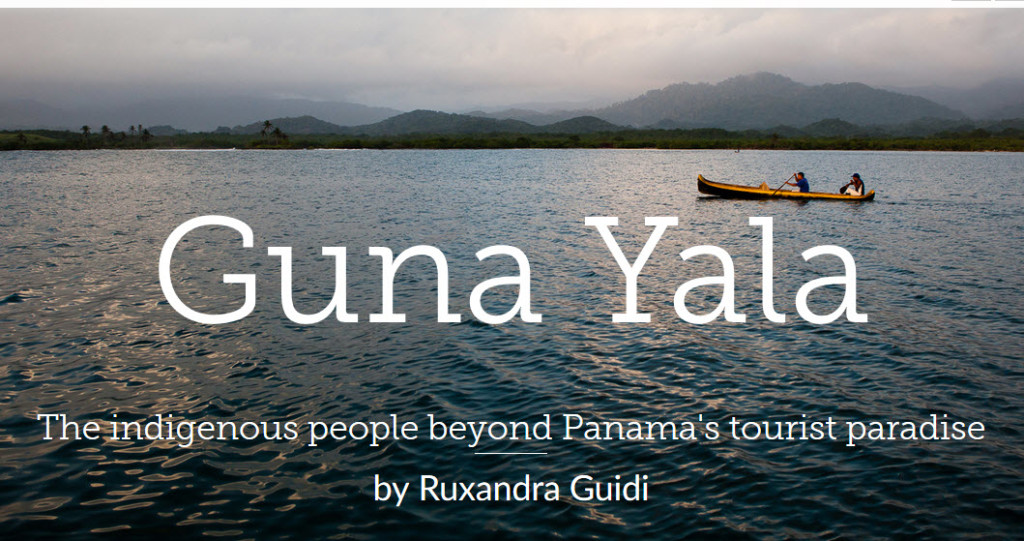Mashable published a great article that is an in depth look into the Guna Yala here in Panama.
As if on cue, the two dogs tied up day and night to a wooden pole behind their owner’s hut begin to bark as the sun appears on the horizon. Soon after, the roosters and the pigs join the chorus, begging to be fed, and the faint calls of the mangrove swallows can be heard, too, as they fly back and forth between the island of Ustupu and the mainland, a half mile away.
With that, the new day begins just like it does every day on this island, the most populated of Guna Yala — an archipelago that’s also known as Kuna Yala, or San Blas — in Eastern Panama. The humidity and heat will soon envelop the island, so the villagers start working as soon as they see the faintest hint of light. Men glide through the water in their cayucos, or wooden dugout canoes, as they head out to sea to fish or across the inlet towards their plots on the mainland. Women come out of their homes to sweep the dirt paths and fetch the charcoal they’ll need to start cooking breakfast.
Andrés de León rises from his hammock, and takes a few sips of plantain and cocoa chucula, a thick beverage that will give him the energy he’ll need later this morning. He puts on an old pair of jeans, a t-shirt with a picture of his personal hero, Ché Guevara, and a baseball cap. By six, he’s left his family’s thatched hut and is headed to the dock, machete and an empty woven nylon sack slung over his shoulder.
His whole crew is there to join him, 10 men equipped with rubber boots and machetes who practice sustainable agriculture in one of the most renowned ecotourism spots in Central America.
